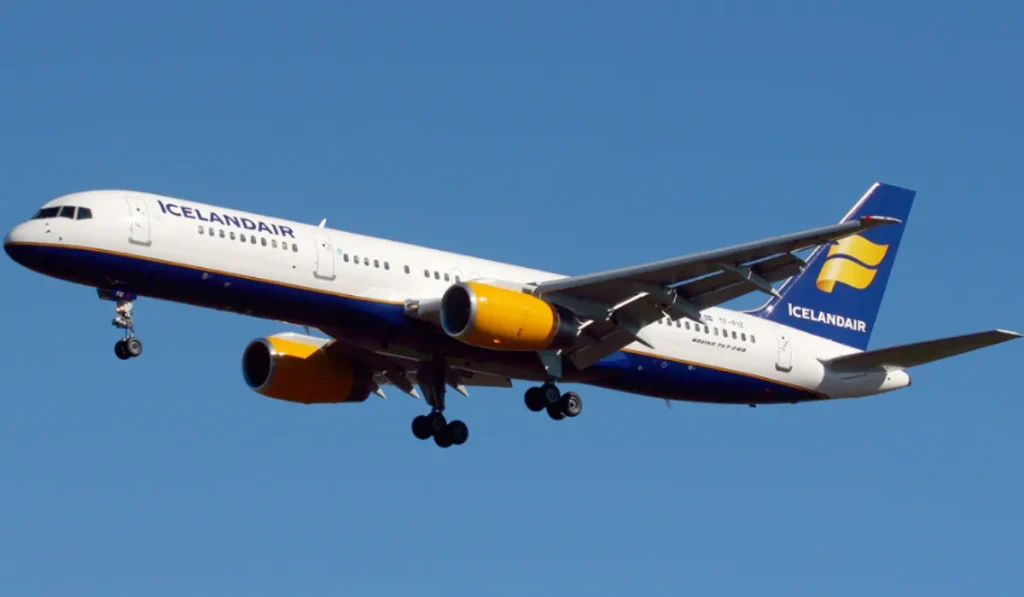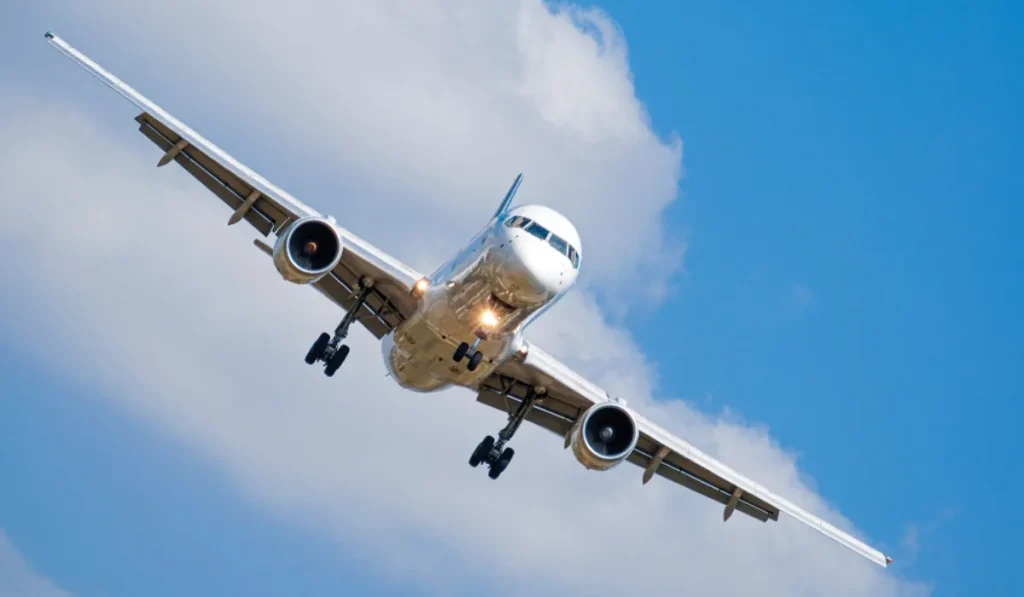A Boeing 757 typically has an empty weight of about 127,520 pounds (57,840 kg). A fully loaded 757 can weigh up to 255,000 pounds (115,660 kg).
The Boeing 757 is a versatile aircraft that has served many airlines for both passenger and cargo transport since its introduction in 1981.
Renowned for its range and performance, the 757 comes in several variants which may cause the weight to vary slightly.
The aircraft has been widely praised for its fuel efficiency and narrow-body design, making it an excellent fit for a variety of routes.
With its capabilities and adaptability, the Boeing 757 remains a valuable asset in the aviation industry.
Its specifications, including weight, reflect a commitment to both power and agility, establishing the 757 as a reliable choice for medium-haul aviation needs.
An Introduction To The Mighty 757
Discover the Boeing 757’s impressive heft—a commercial jetliner tipping the scales at an average empty weight of approximately 127,520 pounds (57,840 kilograms).
Delving into the mighty 757’s specifications reveals the crucial role weight plays in its aerodynamics and efficiency.
The Boeing 757 stands as a titan in aviation history. Famed for its versatility and robust performance, this aircraft has served airlines across the globe.
From its sleek design to its impressive range, the 757 has become a staple in the world of air travel.
The Legacy Of The Boeing 757
The Boeing 757 began gracing the skies in the early 1980s. It quickly became a favorite for its efficiency and power.
Over the years, pilots and passengers alike have come to admire its reliability and comfort.
- First flight on February 19, 1982
- Over 1,000 units built
- Served both commercial and cargo flights
A Fundamental Question: Its Weight
Understanding the 757’s weight is crucial. It reflects on its engineering prowess and load capacity. Let’s break down the numbers:
| Weight Category | Empty Weight | Maximum Takeoff Weight |
|---|---|---|
| Boeing 757-200 | 127,520 lbs | 255,000 lbs |
| Boeing 757-300 | 142,400 lbs | 272,500 lbs |
Diving Into The Numbers
Understanding how much a 757 weighs is key to appreciating its engineering. The Boeing 757 is a popular aircraft for its size, capacity, and performance.
But what about its weight? Let’s “dive into the numbers” and see the details of its weight specifications.
Basic Empty Weight Breakdown
The Basic Empty Weight (BEW) of an aircraft is its weight without payload, fuel, or usable oil.
For the Boeing 757, the BEW includes the weight of the plane, the crew, fluids not used for propulsion, and the installed equipment. To give a clear understanding of the BEW, here’s a breakdown:
- Airframe: structural body of the aircraft
- Interior: seats, galleys, lavatories, and other cabin features
- Systems: electrical, hydraulic, avionics, and more
- Crew: the weight of pilots and any crew needed to fly
The BEW varies based on the model and configuration of the 757. On average, a Boeing 757 has a BEW of around 127,520 pounds (57,840 kilograms).
Maximum Takeoff Weight Explored
The Maximum Takeoff Weight (MTOW) refers to the heaviest weight an aircraft can safely take off with.
This includes the BEW plus fuel, cargo, and passengers. For Boeing 757s, the MTOW is crucial for meeting safety regulations and flight performance standards.
The Boeing 757’s MTOW is impressive, allowing for long-haul travel. Here’s a summary:
| Component | Weight |
|---|---|
| BEW | 127,520 lbs / 57,840 kg |
| Passengers, Bags | Varies on load |
| Fuel | Max capacity |
| Cargo | As per allowance |
| Total MTOW | Up to 255,000 lbs / 115,666 kg |
The MTOW for a Boeing 757 can reach 255,000 pounds (115,666 kilograms). This allows the aircraft to carry a significant load while maintaining the agility and efficiency associated with the 757.
Factors Affecting The 757’s Weight

When we consider the weight of a 757, it’s not just a simple number. The Boeing 757’s weight fluctuates because of various factors.
From passengers and cargo to the amount of fuel, each aspect plays a pivotal role.
Let’s explore what can affect the heft of this iconic aircraft.
Payload Capacities
The payload of the 757 includes the weight of passengers, baggage, and cargo.
A 757’s maximum payload capacity can tip the scales, adding considerable weight.
- Passenger count: More passengers increase the weight.
- Cargo hold: Filled with luggage and goods, varies for each flight.
- Seat configuration: Different layouts affect total payload.
Fuel Volume’s Impact
Fuel is a significant part of the 757’s takeoff weight.
It depends on the distance the plane will cover.
| Fuel for Distance | Weight Increase |
|---|---|
| Short-haul flights | Less fuel needed |
| Long-haul flights | More fuel required |
As the fuel volume changes, so does the plane’s weight.
A full tank means heavier takeoff weights.
Comparing The Giants Of The Sky

The sky is home to some of the most awe-inspiring machines humanity has ever built. Among these titans, the Boeing 757 stands out.
The 757 Vs. Other Commercial Airliners
The Boeing 757, a medium-sized, narrow-body twin-engine jet, has been a workhorse of the skies.
In a battle of weights, knowing how this aircraft measures up to its counterparts offers insight into its unique role in the aviation industry.
Common weights for various commercial airliners:
- Boeing 757-200: Approximately 255,000 pounds (115,665 kg)
- Boeing 737: Ranges from 150,000 to 190,000 pounds (68,039–86,183 kg)
- Airbus A320: Near 170,000 pounds (77,111 kg)
- Boeing 777: Upwards of 500,000 pounds (226,796 kg)
The 757 outpaces many in its class, offering a blend of capacity and range that still impresses.
Heavyweight Champions: The Largest Aircraft
In comparison to the largest aircraft, the 757 might seem less dominant. Yet, its design and efficiency ensure its steady demand.
| Aircraft Model | Maximum Takeoff Weight |
|---|---|
| Boeing 757-200 | 255,000 pounds (115,665 kg) |
| Airbus A380 | 1.265 million pounds (573,794 kg) |
| Antonov An-225 | 1.4 million pounds (635,029 kg) |
These heavyweight champions, like the Airbus A380 and Antonov An-225, tip the scales beyond the 757, embodying the pinnacle of aircraft size and capacity.
Engineering Behind The Weight
Materials And Aerospace Design
At first glance, one might expect heavy metal to dominate a 757’s structure.
But modern aerospace design goes beyond just metal.
- Aluminum is a primary metal used for its optimal weight-to-strength ratio.
- Composites play a crucial role too, comprising lightweight yet strong materials.
- Everything from the wings to the fuselage involves
careful selection to ensure safety and efficiency.
Advancements In Weight Reduction
A 757’s weight reflects decades of evolutionary aerospace innovation.
Engineers continuously work on new ways to shed pounds.
- The introduction of lighter composites cuts a significant amount of weight.
- Advanced computer modeling predicts how materials will handle stress,
allowing for more efficient designs. - Refined aerodynamics result not only in weight reduction but also in better fuel efficiency.
Thus, the weight of a 757 is a testament to the avant-garde of aerospace technology.
It exemplifies the balance between durable materials and cutting-edge design techniques.
The Real-world Implications Of Aircraft Weight
The weight of an aircraft like a Boeing 757 plays a crucial role in aviation. It affects various aspects of a flight, from operational costs to airport design.
Let’s explore the real-world implications of aircraft weight, and see how it impacts both the airlines and airports handling these large aircraft.
Operational Costs And Efficiency
- Fuel Consumption: Heavier planes need more fuel.
- Maintenance: Greater weight increases wear and tear.
- Flight Range: Weight limits distance traveled.
A Boeing 757’s typical empty weight hovers around 127,520 pounds (57,840 kilograms). When loaded, it can reach a maximum takeoff weight of 255,000 pounds (115,666 kilograms). Every extra pound requires more fuel, which means more money.
Bold decisions in weight management lead to operational savings. Airlines always look for ways to shed weight from cabin items to cargo to save fuel.
Ensuring an aircraft operates within its optimal weight range is vital for cost-effective flights. Airlines that excel at this can offer more competitive ticket prices.
Airport Infrastructure And The 757
- Runway Length: Heavier aircraft need longer runways.
- Gate Size: Airports need large gates for a 757.
- Ground Equipment: Heavy aircraft require stronger support gear.
Airports must consider aircraft like the 757 when designing their infrastructure. Runways, taxiways, and aprons must withstand the weight. This ensures safe operations for heavy aircraft.
Gate areas must accommodate the 757’s wingspan and weight. This allows passengers to board and disembark safely.
Airport ground equipment, such as tugs and fuel trucks, should be robust. They must handle the significant weight of fully laden airplanes. Regular updates and maintenance ensure safety and efficiency.
FAQs About The Weigh of A 757
What Is The Empty Weight Of A Boeing 757?
The empty weight of a Boeing 757 commercial airliner, also known as its Operating Empty Weight (OEW), is typically around 127,520 pounds or 57,840 kilograms.
How Much Can A 757 Carry?
A 757 can carry a payload of approximately 55,000 pounds, which translates to nearly 25,000 kilograms. This includes passengers, baggage, and cargo.
What Is The Max Takeoff Weight Of A 757?
The maximum takeoff weight (MTOW) of a Boeing 757 can reach up to 255,000 pounds, or around 115,665 kilograms, depending on the specific model and configuration.
How Does Cargo Affect A 757’s Weight?
Cargo significantly impacts the weight of a Boeing 757. Every item loaded increases the gross weight, affecting fuel consumption and distance the aircraft can travel.
Conclusion
Understanding the weight of a Boeing 757 is fascinating, measuring an impressive 255,000 pounds when fully loaded.
This figure is essential for aviation enthusiasts and industry professionals alike. Remember, the sheer scale of this aircraft is a testament to engineering ingenuity, balancing weight with performance for safe, efficient travel.
Fly high with knowledge!
